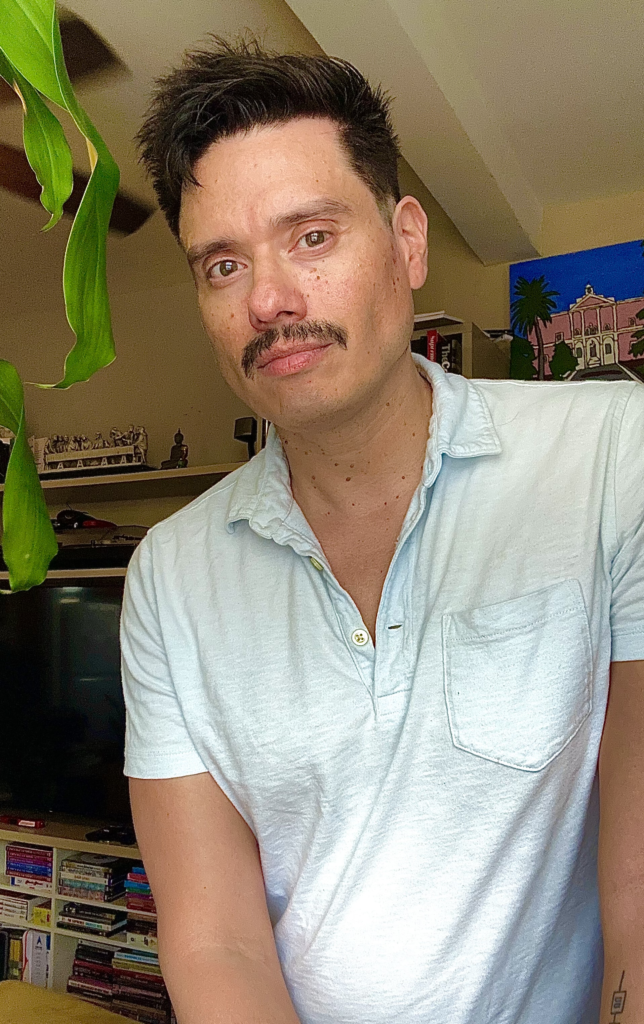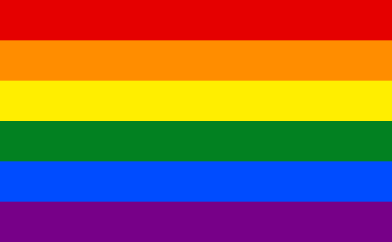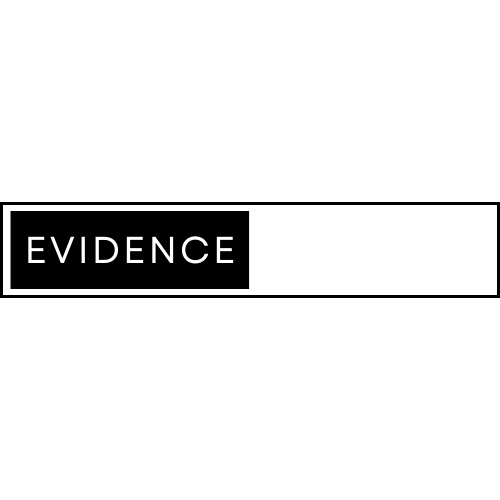Group Psychotherapy’s Potential to Meet the Mental Health Needs of LGBTQ+ Communities
Julio J. Fonseca

I am a first year Psy.D. student who has recently transitioned from an established career working in communities developing HIV leadership, HIV prevention/education, and public health advocacy in marginalized communities with which I share intersectional identities. I continue to volunteer as a mentor in the community for men in their twenties who are newly diagnosed with HIV. Leaving a direct role in LGBTQ+ advocacy in 2023, when over 520 anti-LGBTQ+ pieces of legislation, with over 220 bills specifically targeting transgender and non-binary people, were introduced nationwide, has been a challenge (Peele, 2023). The desire to stay connected to advocacy while learning the value of group psychotherapy offers a new perspective on supporting the mental wellness of LGBTQ+ communities. This paper will examine the LGBTQ+ community’s mental health needs, opportunities for support and mental health access, and considerations for group leaders seeking to create groups that are LGBTQ+ focused.
LGBTQ+ Community Mental Health Needs
As of 2023, 7.2% of the population of the United States identifies as LGBT (Jones, 2023). (Gallup did not poll regarding the identity of Queer.) This number has been steady since increasing in 2020 and 2021, with most of these folks identifying as bisexual. LGB adults are more likely than heterosexual adults to experience a mental health condition, here defined as a serious mental illness or a major depressive episode, substance use disorder, and suicidal thoughts or planning (SAMSHA, 2023). Transgender people are nearly four times as likely as cisgender individuals to experience a mental health condition (Wanta et al,. 2019). Of note, these data are before the onslaught of anti-LGBTQ+ legislation, which will undoubtedly impact community mental health.
Peer Led Support
In my background in working in HIV advocacy, I have seen how peer-led and peer-driven support and interventions have been able to yield positive outcomes. An evaluation of a provider mentorship program I led for HIV clinicians to mentor newer clinicians on how to deliver HIV care found unanticipated outcomes regarding social support. In addition to process, outcome, impact, and economic evaluations, we asked mentors and mentees open-ended questions regarding their experiences. In both in-person and virtual/distance mentoring cases, a recurring theme among participants was the component of social support. Participants benefited from the technical learning and the feeling of having a social connection as they implemented new practices (Fonseca & Hujdich, 2013).
In addition to providers supporting their provider peers in mentoring, I have had the opportunity to see the effects of peer leaders collaborating with clients specifically to evaluate their care during interventions intended to better health navigation, referral activities, and the provision of informal support. The evaluators typically participated in programs at the sites as clients who were subsequently recruited as peer workers and, in this case, evaluators. This shared identity and experiences in common with living with HIV, and the experience was vital in building trust with clients participating in the interventions. One evaluator reported: “They [clients] want some of what we have. They want some of what we were able to acquire. And so, it makes them easier to talk to. They also know that “we’ve been somewhere else” (Hawk et al., 2019; p.183). Peer evaluators also shared how intentional relationship-building with clients created a strong alliance and trust. Developing conviction, according to (Hawk et al.,2019), “[Peers] take the time to build the relationship with their clients. I think that they have a better chance of getting information than social workers . . . we build a trust within them. They talk to us about stuff that they won’t talk to a social worker, or they won’t say to a nurse, or not even a doctor” (p. 188). Having seen how these different angles of peer-led interventions have had a positive impact and coming from the LGBTQ+ community, I feel a natural draw and connection to group psychotherapy. I can see the potential for group therapy to address community needs.
Group Psychotherapy
While the data and trends regarding the mental health needs of LGBTQ+ communities may seem stark, there are solutions routed in evidence that could offer safer support for members of the LGBTQ+ community. A benefit of group therapy is its efficiency in allowing more people to be reached simultaneously, which could address seeing more patients effectively, lessening wait times for individual therapy. Research has demonstrated that group therapy is not only as effective as individual therapy but, in some cases, can be even more effective due to lessening stigma and a sense of camaraderie that group members experience with their peers addressing shared treatment goals (Pappas, 2023; Burlingame et al., 2013). There are considerations for developing groups and emerging research specific to LGBTQ+ group therapy experiences (Ali & Lambie, 2019; Nerses, Kleinplatz, & Moser, 2015; Scheer, Breslow, Esposito, Price, & Katz, 2020) highlight concerns to remember when planning to engage the LGBTQ+ community.
Considerations for LGBTQ+ group planning
I am currently part of a team developing an LGBTQ process group to be co-led and supervised by other self-identified members of the LGBTQ+ community at the George Washington University Clinic. We aim to foster meaningful connections with others sharing a similar lived experience while enacting queer liberatory processes. In developing an LGBTQ+ process group, we will conduct an initial phone intake and a longer group therapy assessment. As we are recruiting broadly, we are keeping in mind that depending on who responds and who is a good fit, their interests will help shape the group and determine if we need more than one group specific to self-identification and varying levels of comfort with heterogeneity represented within the LGBTQ+ community as it may manifest demographically in the group. Much of the research on experiences in treatment and accessing mental health care is focused on LGB members of the community. Reviewing articles and journals to understand some of the challenges faced by the LGBTQ+ community, the lack of research on transgender and non-binary communities’ experiences in therapy and groups is notable and a research area for significant development.
Our recruitment and intake process builds upon Meyer’s Stress Model (Meyer, 2003) and recent research on Multiple Minority stress and proximal and distal stress’s role in mental health outcomes among LGB people of color (Ramirez & Galupo, 2019). Examining distal and proximal factors captured in a group assessment intake interview can provide group co-leaders with information on navigating participant identities, which could require additional group prep for going into multi-cultural LGBTQ+ communities. Research on Queer, Transgender, Black, and Indigenous people of color, some of the most marginalized LGBTQ+ communities, has shown that therapy can be ineffective, even re-traumatizing for these communities (Arora et al., 2022). Factors contributing to these effects include clinicians perpetuating systemic oppression in the therapy experience through microaggressions, explicit aggressions, and lack of intentionality by providers to address and dismantle systemic oppression in the therapeutic process. (Arora, et al., 2022, pp 503-505) During therapy, individuals found it more beneficial to share a common identity, such as the same sexual orientation, gender identity, or race. This commonality helped to develop a better understanding between the participants and the therapist and made the participants feel more acknowledged and respected. (Arora, et al., 2022, p. 504).
These are a few examples of the intentionality that LGBTQ+ peer leaders should consider cultivating a safer space for LGBTQ+ members. As we continue to enhance the group process approach, we seek to include principles of Liberation Psychology to foster a sense of greater autonomy and freedom among LGBTQ+ group members (Singh et al., 2020). The concept of liberating people through counseling and psychotherapy is an exciting way to collectively examine group members’ potential and growth to address resilience and healing in LGBTQ+ communities at a time when hope may feel distant.
Conclusion
I feel an incredible privilege to be an openly queer-identified clinician in training. With the onslaught of anti-LGBTQ+ legislation and anti-queer and anti-trans rhetoric, the need for support of my broader community, in addition to my other intersections as a Latinx person, is not only urgent but vital. I have benefited from working with LGBTQ+ clinicians in my mental wellness journey, and there is a shorthand and shared language of the experience of living in what I think of as “fabulous and fierce” margins. Seeing someone’s journey and experience of what is possible is vital for LGBTQ+ people. There is magic in queer spaces, where people feel comfortable examining aspects of themselves that may not be comfortable or even possible in other settings.
With Group Psychology and Group Psychotherapy receiving APA recognition as a specialty in 2018 and the subsequent practice guidelines and calls to standardize the training of clinicians (Whittingham, et al., 2021), the timing of coming into group psychotherapy is personally exciting and full of possibilities. With the clear need for more affirming LGBTQ+-centered mental health care, group psychotherapy offers an affordable option for LGBTQ+, particularly BIPOC members of the Queer community. Group therapy can help members of the LGBTQ+ community seeking to process aspects of their identity and queer experience with other community members in a safer environment. In the history of queer liberation and advocacy, a key component has been the ability to nurture and support each other in the community. Our willingness as LGBTQ+ clinicians to disclose our location as queer community members when appropriate could provide significant safety and freedom for those seeking safe spaces to process aspects of their LGBTQ-plus identities.
References
Ali, S., & Lambie, G. W. (2019). Examining the Utility of Group Counseling for LGBTQ+ Young Adults in the Coming Out Process. The Journal for Specialists in Group Work, 44(1), 46–61. https://doi.org/10.1080/01933922.2018.1561775
Arora, S., Gonzalez, K. A., Abreu, R. L., & Gloster, C. (2022). “Therapy Can Be Restorative, but
Can Also Be Really Harmful”: Therapy Experiences of QTBIPOC Clients. Psychotherapy, 59(4),
498–510. https://doi.org/10.1037/pst0000443
Burlingame, G., Strauss, B., & Joyce, A. (2013). Change mechanisms and effectiveness of small group treatments. Bergin and Garfield’s handbook of psychotherapy and behavior change. 640-689.
Fonseca, J. J., & Hujdich, B. (2013, March 20-23). Addressing the HIV Workforce Shortage: Insights and Implications for a National Mentoring Initiative. [Poster Presentation] ACTHIV Conference: American Conference for the Treatment of HIV. Denver, CO., United States
Hawk, M., Riordan, M., Fonseca, J. J., & Maulsby, C. (2019). I Don’t Want the Tray to Tip: Experiences of Peer Evaluators in a Multisite HIV Retention in Care Study. AIDS Education and Prevention, 31(2), 179–192. https://doi.org/10.1521/aeap.2019.31.2.179
Jones, J. M. (2023). U.S. LGBT Identification Steady at 7.2%.pdf. Retrieved from https://news.gallup.com/poll/470708/lgbt-identification-steady.aspx
Meyer, I. H. (2003). Prejudice, Social Stress, and Mental Health in Lesbian, Gay, and Bisexual Populations: Conceptual Issues and Research Evidence. Psychological Bulletin, 129(5), 674–697. https://doi.org/10.1037/0033-2909.129.5.674
Nerses, M., Kleinplatz, P. J., & Moser, C. (2015). Group therapy with international LGBTQ+ clients at the intersection of multiple minority status. Psychology of Sexualities Review, 6(1), 99–109. https://doi.org/10.53841/bpssex.2015.6.1.99
Pappas, S. (2023). Continuing Education Effective Group Therapy. Monitor on Psychology, 54(2), 31–35. Retrieved from https://www.apa.org/monitor/2023/03/continuing-education-group-therapy
Peele, C. (2023). Roundup of Anti-LGBTQ+ Legislation Advancing In States Across the Country – Human Rights Campaign.pdf. Retrieved from https://www.hrc.org/press-releases/roundup-of-anti-lgbtq-legislation-advancing-in-states-across-the-country
Ramirez, J. L., & Galupo, M. P. (2019). Multiple minority stress: The role of proximal and distal stress on mental health outcomes among lesbian, gay, and bisexual people of color. Journal of Gay & Lesbian Mental Health, 23(2), 145–167. https://doi.org/10.1080/19359705.2019.1568946
Scheer, J. R., Breslow, A. S., Esposito, J., Price, M. A., & Katz, J. (2020). Violence Against LGBTQ+ Persons, Research, Practice, and Advocacy. 135–148. https://doi.org/10.1007/978-3-030-52612-2_10
Singh, A. A., Parker, B., Aqil, A. R., & Thacker, F. (2020). Liberation psychology: Theory, method, practice, and social justice. 207–224. https://doi.org/10.1037/0000198-012
Substance Abuse and Mental Health Services Administration (2023). Lesbian, gay, and bisexual behavioral health: Results from the 2021 and 2022 National Surveys on Drug Use and Health. Retrieved from https://www.samhsa.gov/data/report/lgb-behavioral-health-report-2021-2022
Wanta, J. W., Niforatos, J. D., Durbak, E., Viguera, A., & Altinay, M. (2019). Mental Health Diagnoses Among Transgender Patients in the Clinical Setting: An All-Payer Electronic Health Record Study. Transgender Health, 4(1), 313–315. https://doi.org/10.1089/trgh.2019.0029
Whittingham, M., Lefforge, N. L., & Marmarosh, C. (2021). Group Psychotherapy as a Specialty: An Inconvenient Truth. American Journal of Psychotherapy, 74(2), 60–66. https://doi.org/10.1176/appi.psychotherapy.20200037
–Return to The Group Psychologist Homepage


